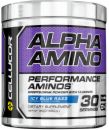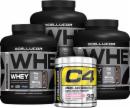
Jen Jewell's Laws Of Shoulder Training
Jen Jewell is a renowned fitness pro and personal trainer. Get her insider's tips on sculpting stage-ready shoulders—no machines allowed!
Jen Jewell may be a professional fitness model, but her life is anything but gym, eat, rest, and repeat. The former gymnast and graduate of Sacramento State is a certified personal trainer who has trained a long list of elite clients online. She's also a published health and wellness writer. And, although Jewell hasn't stepped onstage since 2013 when she competed in the WBFF as a fitness pro, the Cellucor-sponsored athlete frequently travels around the globe conducting workshops and spreading the gospel of fitness.
Jewell knows firsthand how the demands of life can interfere with a regular training regimen, which has required her to squeeze her training into a busy and challenging schedule. One week she may be working from home, but the next she's on the road training in hotel gyms and eating at restaurants. But Jewell's fitness-first attitude allows her to maintain a competition-ready physique no matter where she finds herself.
Jewell's entire physique is admirable, but her shoulders are particularly strong and curvaceous. Bodybuilding.com recently caught up with Jen to gain insight into her shoulder-training philosophy.
What do you consider the most overrated shoulder movement?
I'm going to say an exercise that's frequently trained with shoulders—shrugs, which are done for upper traps. So many people do them with improper form, just loading up as much weight as they can possibly handle. That's when you see form break down. [Heavy shrugs] put a lot of tension directly on the neck.
Unless you're a bodybuilder specifically trying to build larger upper traps, I think heavy shrugs do more harm than good. Your traps get plenty of work on other exercises like lateral raises, meaning they're already getting worked to some degree and don't need extra dedicated exercises.
And what would you consider the most underrated shoulder exercise?
Everyone should always include a pressing movement in their shoulder workouts, but I don't see people doing them as much as I used to. For the record, I don't consider machine overhead presses a suitable alternate to using dumbbells or kettlebells.
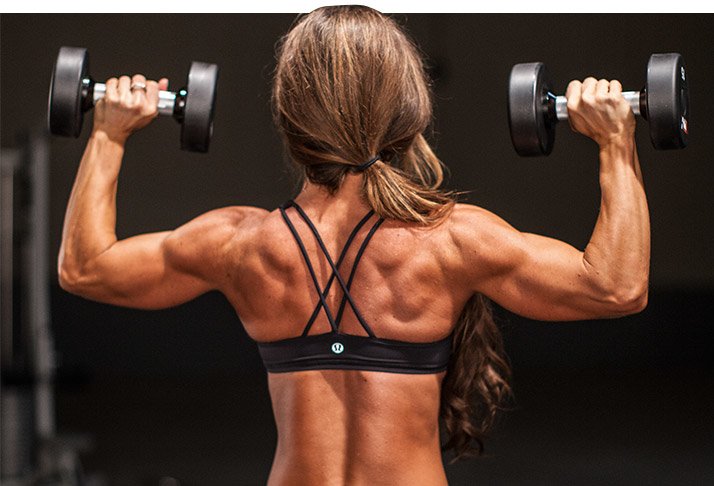
When using dumbbells or kettlebells, with each side working independently, the stronger side can't help cover for the weaker one. I prefer training each side independently, which also allows you to work your core and stabilizer muscles harder.
I typically rotate among three main presses: dumbbells with a neutral (palms-in) grip, dumbbells with a palms-forward grip, and the Arnold press (in which your arms are in front of you and your hands face you in the bottom position). I personally do everything standing, which works a little more of your core musculature.
Do you have a favorite shoulder movement?
Probably the Arnold press. I just feel I get more out of the movement in terms of shoulder activation. I think I get the best results from it because it hits the greatest amount of the deltoid and works the front delt a bit more with your arms starting in a position in front of your body.
Are there any unique ways you perform this lift?
Because of an injury, I can't lift as heavy as I did in the past, so I've started doing dropsets. I'll also even do a biceps curl first before going into the Arnold press. To up the intensity, sometimes I'll do an Arnold press and go into a single-arm burpee.
This is done one arm at a time, repeating for all reps for one side before switching to the other. I can't push the same weights I did before the injury, so I'm trying to make my training more intense in other ways.
How do shoulders fit into your training split?
Because I travel a lot, I have to be flexible. If I'm training at home, I'll have a shoulders-only day, and I also throw some shoulder work in with arms later in the week.
When I'm in a hotel gym, I'll simply do a couple of upper-body workouts each week in a circuit that includes shoulder moves. So whether I'm at home or on the road, I get two different types of workouts that include shoulders.
What kinds of sets-and-reps schemes do you typically use when training shoulders?
I usually do 4 sets of 15 reps—at 15, it's close to failure. But I don't like to just rest between sets: I do a lot of cardio acceleration in between to keep my heart rate up. I throw in mountain climbers, burpees, med-ball slams, or plank ups/downs—these are done by starting in an elevated plank position, then going down to your forearms, then pushing back up to the plank position continuously for about 30 seconds—between working sets. This keeps my heart rate up and burns more calories. I'm pretty sedentary when I'm not in the gym, so I really have to make every minute count.
Are there are other advanced intensity-boosting techniques you like to use?
Sometimes I'll do supersets, combining two exercises like front and lateral raises, either with cables or dumbbells. It's really easy to go right from one into the other because they target different heads.
What's the biggest mistake you see people make when training shoulders?
Without question it's improper form. You see a lot of people do lateral raises, for example, by hoisting the weight up, but are they using their middle delt or half their body weight to get it up? If you have to swing your body back and forth to help lift a weight, it's probably too heavy. Never sacrifice form to hoist a weight that's too heavy.
I think a lot of people neglect their rear delts, too. For some people it's that old "out of sight, out of mind" mentality. Your rear delts do get worked to some degree on back day, but I make it a point to always train rear delts with the other shoulder heads.
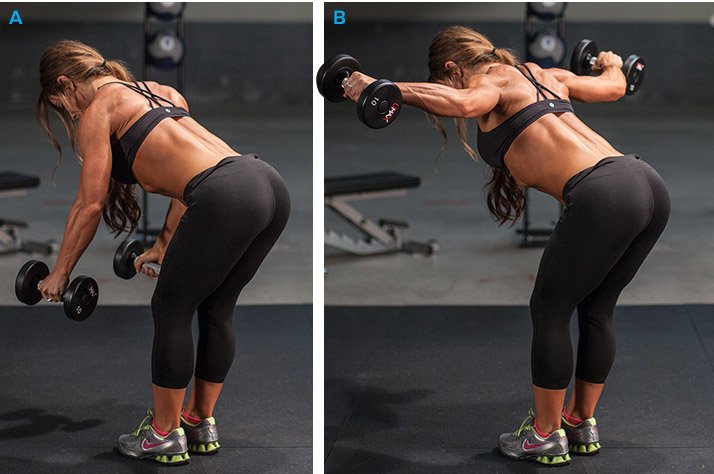
What was the biggest mistake you made when training shoulders?
I was 16 when I picked up my first weight, and I made a heckuva lot of mistakes. I'd see all these different exercises in fitness magazines, and I thought I should do them all in a single workout. A shoulder workout would take me two hours to complete as I did all the machines exercises, then the dumbbells, and then the barbell. I was obviously doing way too much.
As I became more educated, I realized that more was not better. I was really, really sore, and it was taking longer to recover between workouts. Yeah, we all want to be a little sore the next day, but I couldn't even move my shoulders. So I knew something was wrong.
Do you have a favorite finishing technique to end your shoulder workout?
I really like finishing with overhead medicine-ball slams. Most hotel gyms have some kind of med ball. I go with one that's about 15-20 pounds. Sometimes I'll do wall-ball throws—a movement that combines a squat with a medicine-ball toss against the wall. Other times at home I'll finish with the battle ropes, but I'm not super coordinated with that.
What's the best advice you've ever received about training shoulders?
Don't neglect them. Sure, they get some work on chest and back day, but that's not enough. A lot of women tell me they want a nicely sculpted set of arms, but I counter that they'll look better set off by sculpted shoulders. If you don't have shoulders, your arms aren't going to look as good, plain and simple.
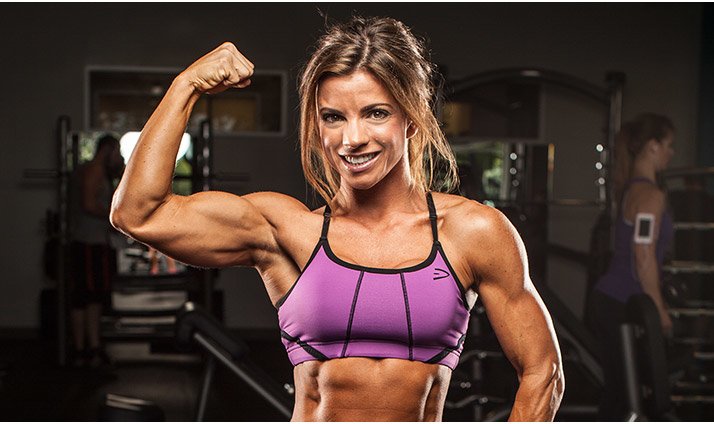
When people ask you what your secret to sexy shoulders is, what do you tell them?
To switch it up. I don't get stuck in a rut because I use a combination of dumbbells, kettlebells, and cables. You will not see me on a shoulder machine—ever. I'm also short, so I don't fit very well in machines, but I just get a better workout doing unilateral movements. You get a longer range of motion, and the stronger side can't compensate for the weaker one when each side has to work independently. I can honestly say it's been more than a decade since I used a machine for shoulders.
My basic formula is simple, not secret: I always include a press, plus one isolation movement for each of the three delt heads. That's it: four exercises. This style of shoulder workout can be done quickly, especially if you're doing supersets. There's no reason you can't build sexy shoulders quickly and efficiently!


